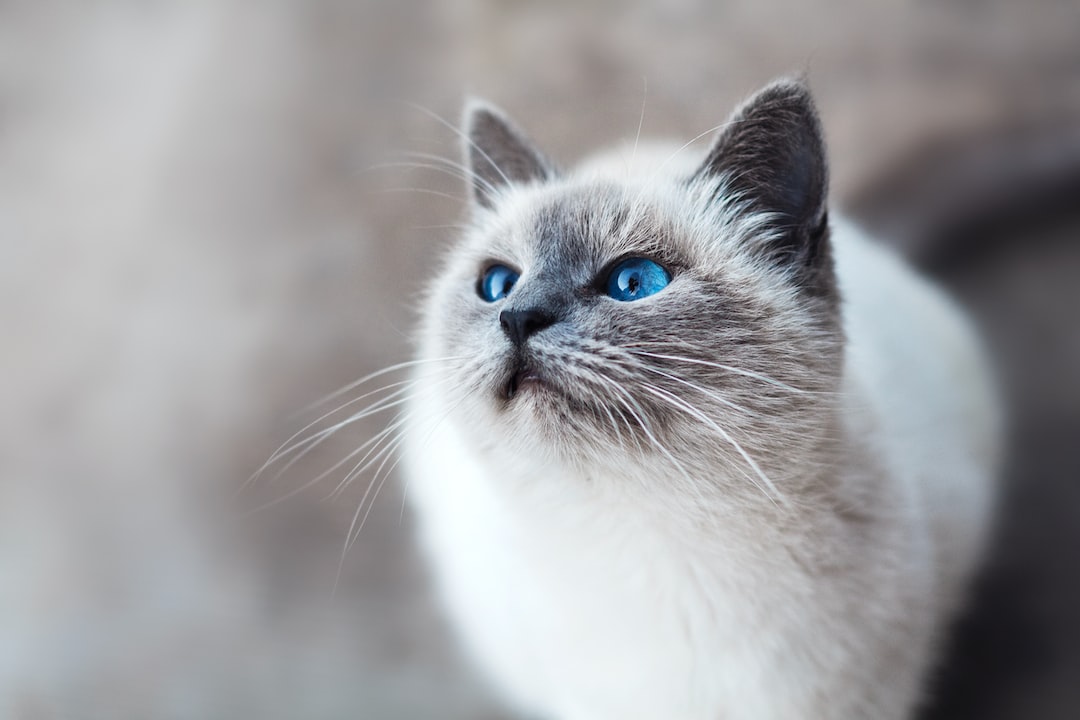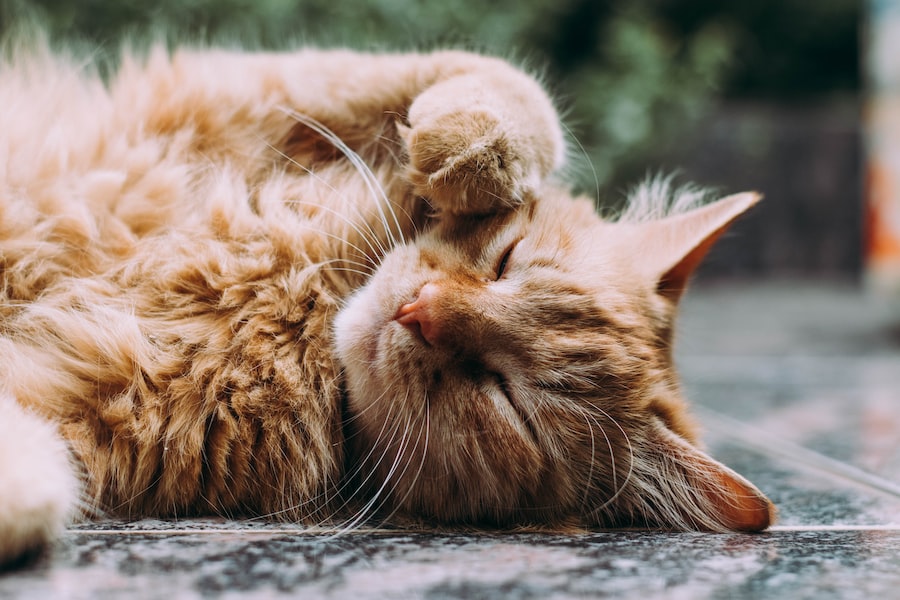Greenery vs. Feline: How to Safeguard Your Plants from Your Curious Cat

Understanding your cat’s behavior around plants is crucial for their safety and well-being. Cats are naturally curious creatures, and their curiosity often extends to plants. However, many common plants can be toxic to cats, posing a serious risk to their health. By understanding your cat’s behavior around plants and taking the necessary precautions, you can create a safe environment for both your feline friend and your beloved greenery.
Key Takeaways
- Cats are naturally curious and may be attracted to plants, but it’s important to understand their behavior around them.
- Many common plants, including lilies and aloe vera, can be toxic to cats and should be kept out of reach.
- Creating a safe space for your plants, such as a designated room or using barriers, can help prevent your cat from accessing them.
- Choosing pet-friendly plants, such as spider plants and bamboo, can provide a safe and enjoyable environment for both you and your cat.
- Using deterrents, such as citrus scents or motion-activated sprays, can help keep cats away from plants.
Understanding Your Cat’s Behavior Around Plants
Cats are attracted to plants for various reasons. One of the main reasons is their instinctual need to explore and investigate their surroundings. Plants provide an interesting sensory experience for cats, with different textures, scents, and even tastes. Additionally, some cats may be attracted to plants as a form of entertainment or stimulation.
Common behaviors exhibited by cats around plants include chewing on leaves, digging in soil, knocking over pots, and rubbing against plants. While these behaviors may seem harmless, they can lead to potential dangers. Chewing on leaves can expose cats to toxic substances, digging in soil can damage plants or expose them to harmful chemicals, knocking over pots can cause injury to both the cat and the plant, and rubbing against plants can result in skin irritation or allergic reactions.
Common Plants That Are Toxic to Cats
There are numerous common plants that are toxic to cats. Some of the most dangerous ones include lilies, azaleas, tulips, daffodils, sago palms, and poinsettias. These plants contain toxins that can cause a range of symptoms in cats, including vomiting, diarrhea, difficulty breathing, kidney failure, and even death.
It is important to be aware of the dangers these plants pose and take steps to keep them out of your cat’s reach. If you suspect that your cat has ingested a toxic plant or is exhibiting any symptoms of poisoning, it is crucial to seek veterinary care immediately.
Creating a Safe Space for Your Plants
| Topic | Metric |
|---|---|
| Lighting | Number of hours of sunlight per day |
| Temperature | Range of optimal temperature for plant growth |
| Humidity | Percentage of humidity required for plant growth |
| Watering | Frequency of watering required for specific plants |
| Soil | Type of soil required for specific plants |
| Fertilizer | Frequency and type of fertilizer required for specific plants |
| Pests | Common pests that can harm plants and how to prevent them |
To create a safe space for your plants, there are several tips you can follow. First, consider placing your plants in areas that are inaccessible to your cat, such as high shelves or hanging baskets. This will prevent your cat from being able to reach and potentially damage or ingest the plants.
Another option is to create a designated area for your plants that is off-limits to your cat. This can be achieved by using baby gates or other barriers to restrict access to the area. Additionally, you can use deterrents, such as citrus-scented sprays or aluminum foil, to discourage your cat from approaching the plants.
It is also important to ensure that any fertilizers or pesticides used on your plants are safe for cats. Avoid using products that contain toxic substances and opt for pet-friendly alternatives instead.
Choosing Pet-Friendly Plants
Choosing pet-friendly plants is another way to ensure the safety of your cat around plants. There are many plants that are non-toxic to cats and can even provide additional benefits, such as improving air quality in your home.
Some pet-friendly plants include spider plants, Boston ferns, African violets, and bamboo palms. These plants are not only safe for cats but can also add beauty and greenery to your home.
When selecting pet-friendly plants, it is important to do thorough research and ensure that the specific variety you choose is safe for cats. Some plants may have certain parts that are toxic while others are not, so it is crucial to know the specific risks associated with each plant.
Using Deterrents to Keep Cats Away

Deterrents can be an effective way to keep cats away from plants. There are various types of deterrents available, including sprays, motion-activated devices, and ultrasonic devices.
Sprays that have a strong scent or taste, such as citrus or bitter apple, can be applied to plants to discourage cats from approaching them. Motion-activated devices emit a burst of air or a loud noise when a cat comes near, startling them and deterring them from the area. Ultrasonic devices emit a high-frequency sound that is unpleasant to cats but inaudible to humans.
When using deterrents, it is important to follow the instructions carefully and use them consistently. It may also be necessary to rotate different types of deterrents to prevent cats from becoming accustomed to one specific method.
Training Your Cat to Stay Away from Plants
Training your cat to stay away from plants can be a long but rewarding process. The key to successful training is consistency and positive reinforcement.
Start by teaching your cat the “leave it” command. This can be done by using treats or toys and rewarding your cat when they respond correctly. Gradually introduce plants into the training sessions, rewarding your cat for ignoring or moving away from the plants.
It is important to never punish or yell at your cat during training, as this can create fear and anxiety. Instead, focus on positive reinforcement and redirecting their attention to appropriate toys or activities.
Providing Alternative Greenery for Your Cat
Providing alternative greenery for your cat can help satisfy their natural instincts while keeping them away from your plants. Cats are attracted to the texture and taste of grass, so offering them a safe and non-toxic alternative can be beneficial.
There are various options for providing alternative greenery for your cat, such as growing cat grass or purchasing pre-grown cat grass from pet stores. Cat grass is a type of grass that is safe for cats to chew on and can help aid digestion.
Another option is to provide your cat with interactive toys or puzzle feeders that mimic the experience of hunting and foraging for food. These toys can provide mental stimulation and help redirect your cat’s attention away from plants.
Using Elevated Planters to Keep Plants Out of Reach
Elevated planters can be an effective way to keep plants out of your cat’s reach. By placing plants on high shelves or using hanging baskets, you can prevent your cat from being able to access them.
When using elevated planters, it is important to ensure that they are securely attached and cannot be knocked over by your cat. Additionally, be mindful of any potential hazards, such as cords or wires, that may be within reach of your cat.
Monitoring Your Cat’s Access to Plants
Monitoring your cat’s access to plants is crucial for their safety. Even with precautions in place, it is still possible for cats to find a way to reach plants or accidentally knock them over.
Regularly check the area where your plants are located to ensure that there are no signs of damage or ingestion. If you notice any chewed leaves, soil scattered around, or other signs of tampering, it is important to take immediate action to prevent further access.
Seeking Veterinary Care for Plant-Related Injuries
If your cat has ingested a toxic plant or is exhibiting any symptoms of poisoning, it is crucial to seek veterinary care immediately. Time is of the essence when it comes to treating plant-related injuries, as some toxins can cause irreversible damage if not addressed promptly.
In addition to seeking veterinary care, it is important to prevent plant-related injuries from occurring in the first place. This can be done by creating a safe environment for your cat and taking the necessary precautions to keep plants out of their reach.
Understanding your cat’s behavior around plants is essential for their safety and well-being. By being aware of the dangers posed by toxic plants and taking the necessary precautions, you can create a safe environment for both your cat and your beloved greenery. Remember to choose pet-friendly plants, create a safe space for your plants, use deterrents effectively, and provide alternative greenery for your cat. By following these tips and monitoring your cat’s access to plants, you can ensure that they stay happy and healthy in their plant-filled home.



